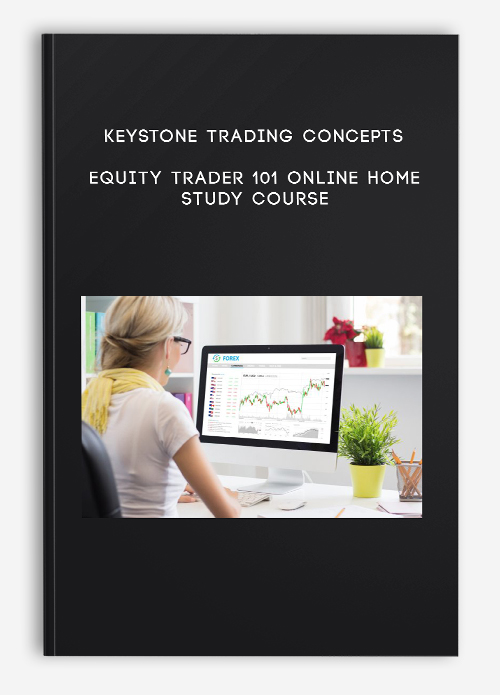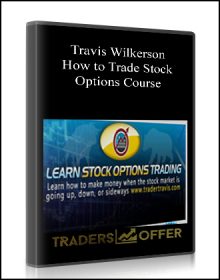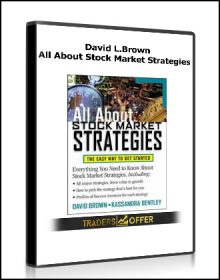Keystone Trading Concepts – Equity Trader 101 Online Home Study Course
$89.00

Keystone Trading Concepts – Equity Trader 101 Online Home Study Course
Get Keystone Trading Concepts – Equity Trader 101 Online Home Study Course on Salaedu.com
Description:
Much more than just another stock trading course, a complete business plan for operating a profitable stock trading business.
01 – The stock Market – Introduction to common stock, the stock market and the business of bringing buyers and sellers together.
– Understand the purpose of common stock and the role of the stock market.
– Learn all the participants and how they are involved, hedge funds, mutual funds, market makers, specialists and the public.
– Understand how interaction takes place between these diverse groups of speculators and business men and women.
– Gaining a clear understanding of the opening price action to set up your trading day.
02 – The Business plan. The TRADING PLAN and the GAME PLAN make up the business plan. Clarifying our business objectives.
– To understand you are in the business of managing money, the same as a hedge fund or private wealth managers.
– To understand you’re your # 1 business objective is to preserve capital.
– Your # 2 business objective is to understand how to grow your capital CONSISTENTLY.
– To understand as a trader you will grow your capital consistently when you realize your job is risk management, not predictions.
– As laid out in the business plan you will earn consistent money by mastering the relationship between probability, risk and leverage.
– We will outline in detail the skills needed to have and to learn to succeed in your business.
03 – Candlestick Analysis – A short term picture of supply and demand. Learning how to time entries and exits with precision.
– To introduce candlestick charts and to understand the price action that forms the candlestick.
– To introduce specific candlestick patterns and understand how to apply them.
04 – Price Action – Paying attention. Giving structure to price action so you can anticipate what is likely to happen next.
– To learn the basic structure of price action so the price movement will never be random.
– To begin learning the skills of letting the market tell you what to do instead of placing a trade and hoping the market proves you correct.
– To understand how the basic structure is created by the interaction between institutions.
– NASDAQ market makers, NYSE specialists and the public.
– To begin forming trading scenarios based on recognition of the basic price structure.
05 – Support and resistance – Identifying where supply and demand have taken control. Trading the TEST and Breakout scenario.
– To define support and resistance and why it’s significance cannot be overstated.
– To identify the key support and resistance levels for short term stock traders.
– To understand how to trade support and resistance, both for profit targets and stop loss areas.
06 – Trend Analysis – Identifying OUR traded trend. We will learn to recognize intra day order flow so that you can understand when to maximize your leverage or when to sit on the sidelines.
– To easily identify if you should be buying, selling short or doing nothing.
– To quickly identify the strength of the trend and intra day order flow.
– To identify Basic Moves (flags and momentum) in relation to the trend and the order flow and how that analysis affects our trading decisions.
– To introduce moving averages and how to use them.
– To identify a potential change of trend.
– To identify when a trend has changed so we can adjust our trading bias as to order flow.
07 – Multiple Time Frame Analysis – The key to managing risk, assessing probabilities and assigning leverage to a trading idea.
– To gain a clear perspective of longer term trends and how they set up trade scenarios and trade entries.
– To understand market conditions that will dictate when probabilities are in our favor so we can increase leverage.
– To understand how shorter time frames interact with large time frames to help us manage risk and time entries.
08 – Trading scenarios – Of all the possibilities, the only ones to focus on are The Big 3.
– As we introduced in 04; Price Action Phase gives structure to volatility so that price movement is never random.
– When you get a firm grip of recognizing the market environment first, you will then know which of the Big 3 to pull out of your trading bag.
09 – Volume – The POWER behind the “Idea,” the juice behind the order flow.
– To understand and more importantly recognize how volume will start, confirm or end a move.
– To learn to recognize the clues volume leaves behind both on the charts and on the tape.
– To understand that where volume occurs in the price action phase or during a chart pattern is significant to assess the probability of the next move.
10 – Order entry techniques / risk management – Understanding how to manage risk and share size. Identifying clear cut entry patterns and the conditions that precede them.
– To learn the different types of orders for each market (NASDAQ OR NYSE).
– To learn how a professional manages risk while in a trade and the importance of re-entry.
– To learn clear cut trade entry and exit strategies that incorporate MTFA, chart patterns and candlestick patterns.
– To study our comprehensive risk management plan that includes how you will manage capital in regards to entry price, initial stop loss and share size allocation.
– Defining your risk for each trade and managing leverage. To truly gain an understanding that preservation of capital is your first priority.
11 – Trade management strategies – Stop loss strategies and profit taking scenarios.
– To understand the mindset for successfully managing risk as a career.
– To understand there is a HUGE difference between a bad trade and a trade that doesn’t make money.
– To truly accept the fact that losing trades are a very common part of trading and should be viewed as nothing more than the cost of doing business.
12 – Level 2 and direct access trading – Understanding quoted prices and how to read executed trades, direct access routing strategies.
– To understand the difference between online trading and direct access trading.
– Learning the difference between Level 1 quotes and level 2 quotes.
– Introduction to time and sales.
– To determine where your routing skills are now and where you want them to be.
– To review the choices for direct access order routing and how to use them.
– To understand how true direct access trading can and should significantly lower your monthly trading costs through proper routing decisions.
13 – Tape Reading – Understanding urgency, when you should be busy and learning to forecast the next immediate move.
– To gain an understanding of what you should be paying attention to in time and sales and how it relates to price action.
– To learn how to focus on what bids and offers do in relation to the prints in time and sales and giving meaning to that action.
– To gain an understanding and “framework” for what price action “should do” based on those prints.
14 – Market Analysis – Is the wind at your back? Learning to use overall market conditions to your advantage.
– To introduce a complete system of market analysis to complement your stock trading decisions.
– To introduce market internals and more importantly how to properly use them.
– To discuss another element of Dow Theory and it’s relation to market timing.
15 – Trading psychology – Developing the winning mindset. Understanding what it takes to trade for a living.
– Learn the proper mindset for winning trading.
– Learn why you don’t need to predict the markets next move to earn a consistent living form the stock market.
– How to think like a profitable trader
– Recognizing what fear and nervousness mean in your trading
– Defining discipline as it relates to all aspects of trading, not just the stop loss.
– Identifying the steps to becoming a consistent trader.
16 – Homework – Giving structure to a preparation and a repeatable game Plan.
– To outline a simple and repeatable Game Plan
– The bulk of the course is about building a trading plan and how to implement that plan. Your homework is your Game Plan. The game plan consists of market review and sector scanning and stock scanning for tomorrow’s trade scenarios.
Bond -Stock Trading course: Learn about Bond -Stock Trading
Bond trading definition
Bond trading is one way of making profit from fluctuations in the value of corporate or government bonds.
Many view it as an essential part of a diversified trading portfolio, alongside stocks and cash.
A bond is a financial instrument that works by allowing individuals to loan cash to institutions such as governments or companies.
The institution will pay a defined interest rate on the investment for the duration of the bond, and then give the original sum back at the end of the loan’s term.
A stock trader or equity trader or share trader is a person or company involved in trading equity securities.
Stock traders may be an agent, hedger, arbitrageur, speculator, stockbroker.
Such equity trading in large publicly traded companies may be through a stock exchange.
Stock shares in smaller public companies may be bought and sold in over-the-counter (OTC) markets.
Stock traders can trade on their own account, called proprietary trading, or through an agent authorized to buy and sell on the owner’s behalf.
Trading through an agent is usually through a stockbroker. Agents are paid a commission for performing the trade.
Major stock exchanges have market makers who help limit price variation (volatility) by buying and selling a particular company’s shares on their own behalf and also on behalf of other clients.
More Course: BOND – STOCK
Outstanding Course:The Definitive Guide for Stock Indicators by TechniTrader
1 review for Keystone Trading Concepts – Equity Trader 101 Online Home Study Course
Add a review Cancel reply
Related products
Forex - Trading & Investment
Forex - Trading & Investment
Forex - Trading & Investment
Forex - Trading & Investment
Forex - Trading & Investment
Stock - Bond trading




![Stansberry's Investment Advisory March 2016 Newsletter (Stansberry Research) [eBook (PDF)]](https://tradersoffer.forex/wp-content/uploads/2016/12/Stansberrys-Investment-Advisory-March-2016-Newsletter-Stansberry-Research-eBook-PDF-220x280.jpg)
![Investors Business Daily Jan~June 2015 - [ePaper (PDF)]](https://tradersoffer.forex/wp-content/uploads/2016/11/Investors-Business-Daily-JanJune-2015-220x280.jpg)




king –
“We encourage customers to contact Customer Service and think twice before making payment. All course contents will be similar to what is from the author.”
Thank you!